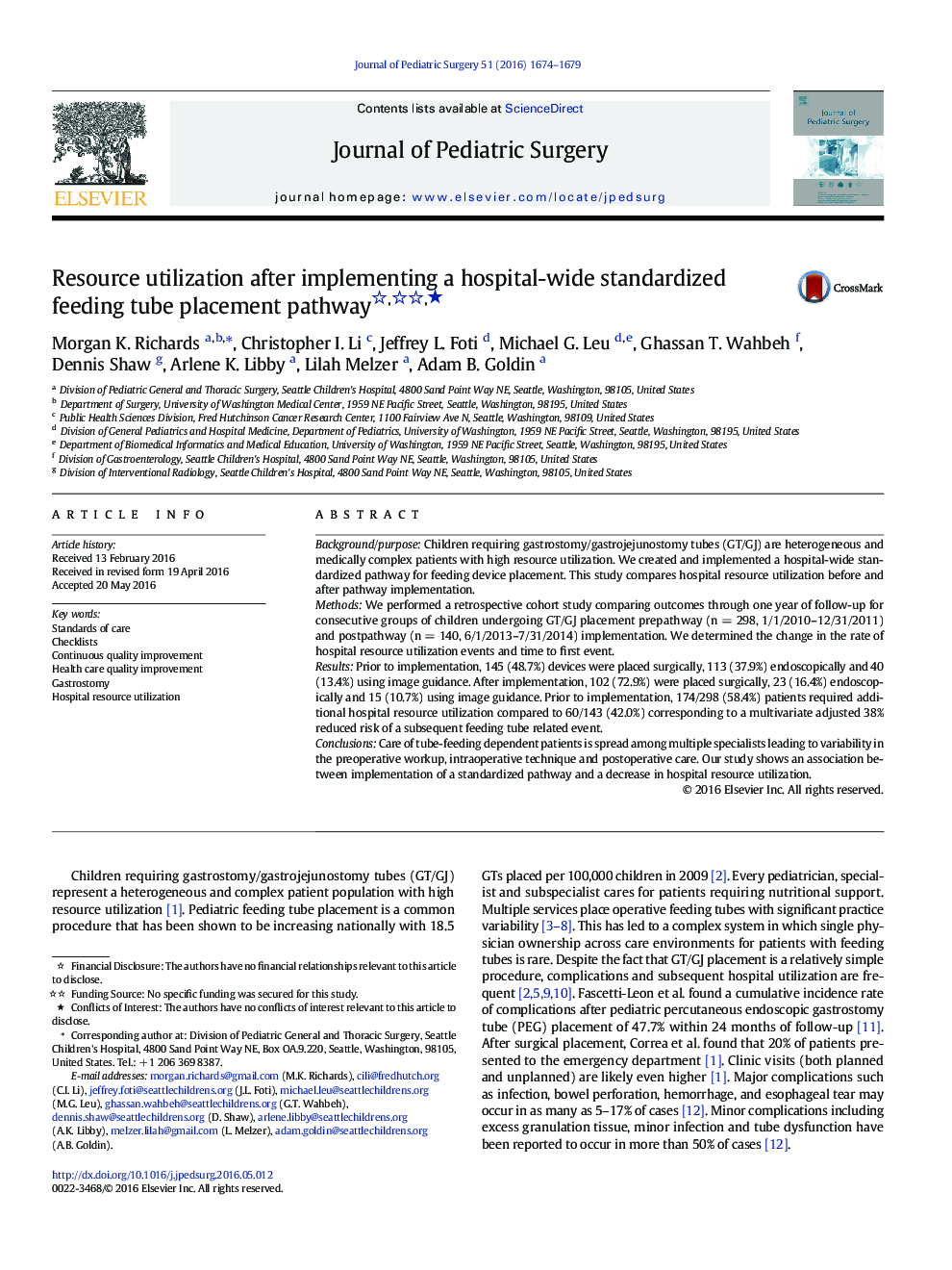| Article ID | Journal | Published Year | Pages | File Type |
|---|---|---|---|---|
| 4154679 | Journal of Pediatric Surgery | 2016 | 6 Pages |
Background/purposeChildren requiring gastrostomy/gastrojejunostomy tubes (GT/GJ) are heterogeneous and medically complex patients with high resource utilization. We created and implemented a hospital-wide standardized pathway for feeding device placement. This study compares hospital resource utilization before and after pathway implementation.MethodsWe performed a retrospective cohort study comparing outcomes through one year of follow-up for consecutive groups of children undergoing GT/GJ placement prepathway (n = 298, 1/1/2010–12/31/2011) and postpathway (n = 140, 6/1/2013–7/31/2014) implementation. We determined the change in the rate of hospital resource utilization events and time to first event.ResultsPrior to implementation, 145 (48.7%) devices were placed surgically, 113 (37.9%) endoscopically and 40 (13.4%) using image guidance. After implementation, 102 (72.9%) were placed surgically, 23 (16.4%) endoscopically and 15 (10.7%) using image guidance. Prior to implementation, 174/298 (58.4%) patients required additional hospital resource utilization compared to 60/143 (42.0%) corresponding to a multivariate adjusted 38% reduced risk of a subsequent feeding tube related event.ConclusionsCare of tube-feeding dependent patients is spread among multiple specialists leading to variability in the preoperative workup, intraoperative technique and postoperative care. Our study shows an association between implementation of a standardized pathway and a decrease in hospital resource utilization.
